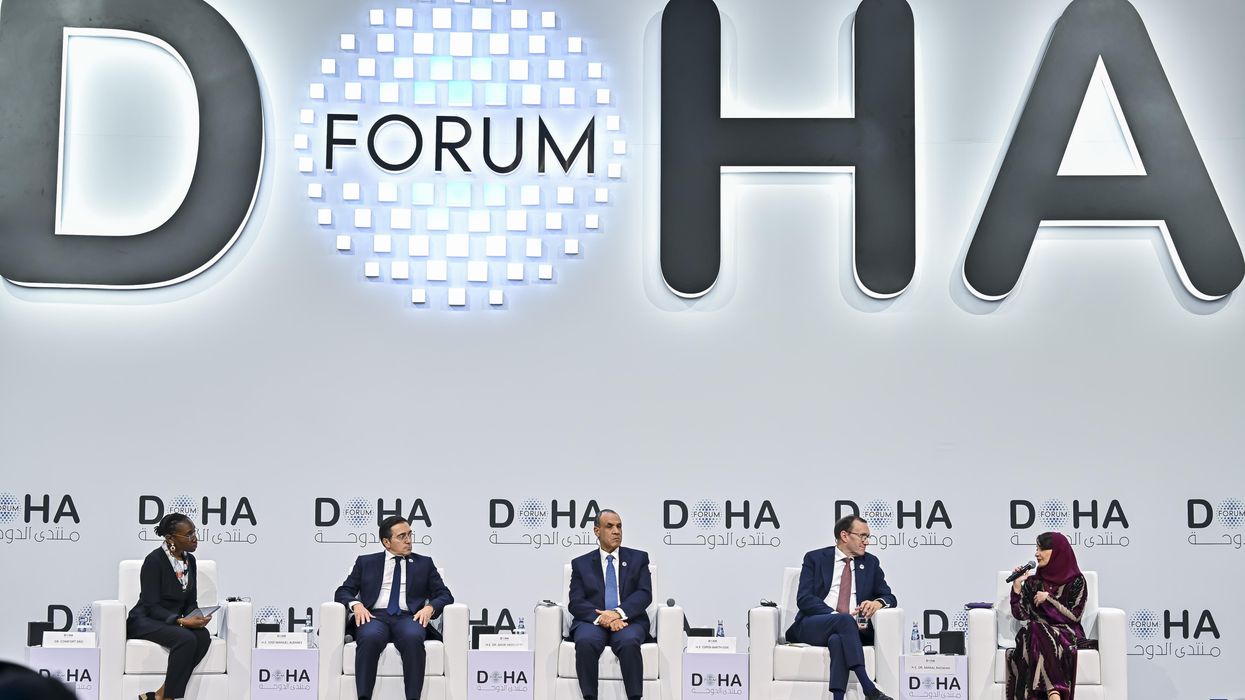If a budget is a moral document, President Trump’s FY2021 budget proposal is a dark tell-all. Released this week to outcry from experts and advocates alike, the document underscores the president's overt contempt for the most vulnerable in our society and consistent failure to plan for the real human security needs of the 21st century.
The total proposed budget is a record $4.8 trillion, up from the $4.74 trillion approved budget from last year. Its toplines include a 1 percent increase to the sky-high $738 billion defense budget, a continuation of tax breaks for the ultra-wealthy that equate to an additional $1.4 trillion by 2030, and drastic cuts to Medicare, Medicaid, and Social Security, at $850 billion, $270 billion, and $30 billion respectively. It also takes a knife to nearly every social service and national program designed to help Americans live full, supported lives, including double-digit percentage cuts to the Departments of State, Labor, and Interior, Housing and Urban Development, and the Environmental Protection Agency. These numbers are not arbitrary, but rather carefully designed to both dismantle the foundations of services many Americans require to live and further enrich the weapons manufacturers and service contractors in the catbird seat.
Spokespeople for the administration claim that pumping billions more into the existing defense budget is necessary to prepare the country to take on “emerging threats” and strategically navigate relationships with Russia and China. But it’s difficult to believe that throwing money into the military-industrial machine is the solution, especially when the Defense Department is currently riddled with $35 trillion in accounting changes, failed its first audit, buried a report detailing $125 billion in waste, routinely pays contractor salaries at rates three times higher than civilian staff, and continues to produce suped-up trillion-dollar weapons systems that can neither fly nor shoot straight. Yes, really… to all of that.
The choice to funnel more taxpayer dollars into an already-bloated Pentagon while attacking the programs many Americans most urgently need to live communicates absolute disregard for a huge swath of people in this country. It also adheres to the outdated myths of American exceptionalism and faux military “might.” The U.S. already spends more on its military than the next seven countries combined, but continues to significantly inflate the Pentagon’s budget each year. Despite the fact that the U.S. military and its dependent corporations are more heavily funded now than they have been since the end of the Cold War, the proposed top-ups would continue increasing military spending to a whopping 62 percent of the discretionary budget within the next 10 years.
While President Trump’s proposal for further misallocating our national wealth is not surprising, it is also not representative of the wishes or interests of Americans. Two separate polls conducted by Data for Progress and the Ploughshares Fund found that a majority of American voters support reinvesting at least $200 billion from the Pentagon to pay for domestic and human needs priorities.
These polls revealed that the average citizen is much more concerned about how to pay for their medical procedures, ensure their employment through the end of the year, afford the ever-increasing cost of higher education, and reduce the existential threat to their lives posed by climate change than they are about a perceived international “enemy.” Contrary to the ideas behind Trump’s budget, external threats from overseas are not dominating Americans’ day-to-day worries any more than their concerns about the economy, their health, or their families. Nor should they be, as these so-called external “threats” are often conjured in the service of the American war machine. Much of the U.S. military’s mandate could be effectively addressed with wisely employed diplomacy and development efforts.
As detailed in the recent Afghanistan Papers and supported by returned veterans, the notion of “U.S. Empire” is flawed by design. Warmaking for the purposes of enforcing international dominance does not work. The so-called “War on Terror” alone has cost over 801,000 lives and $6.4 trillion, with interest accruing daily, and to no discernible strategic objective.
Reckless and unchecked budgeting like the FY2021 proposal provide hawkish U.S. leaders with blank checks to continue flinging the country into global conflict as both an aggressor and an overzealous enforcer, roles that a majority of citizens and voters strongly disavow and feel burned by. In addition to a dwindling desire for military engagement and a robust re-commitment to anti-war principles, voters are also increasingly unwilling to commit to the heavy lift and squander of national resources required to engage in war.
Which all begs the question: what, then, does an informed, humane alternative budget look like? Programs with the power to directly improve Americans' lives and wellbeing have price stickers as specific as defense line items, if not more so.
According to a HUD estimate, $20 billion annually is enough to provide shelter for every person experiencing homelessness in the United States. Injecting $26 billion into the purchasing power of low-income Americans could functionally end hunger nationwide. Conflict analysts estimate that one dollar invested in the prevention of violent conflict through development or diplomacy could save up to $16 dollars in eventual government response. At the core of these statistics is the fact that every dollar allocated to the ballooning Pentagon is a dollar withheld from what could actually make us meaningfully safe: healthcare, climate justice, social services, education, infrastructure, and preventative diplomacy.
As a country, making the decision to forgo cost-effective investments in the health, longevity, resilience, professional competency, and satisfaction of our citizens is a grave mistake. Not only does it stunt our ability to grow, succeed, thrive, and compete as a nation, it also harms those around the world who consistently bear the brunt of our militaristic whims. Despite the severity and injustice of this trade-off, we roll over to it annually. Fighting for a more aligned budget requires us to continually highlight the unconscionable opportunity costs of flushing money through the war machine and to tangibly plan for a world where these funds are channeled into programs of care, connectedness, and contribution to the flourishing of all Americans.
Presidential candidates and Members of Congress alike must acknowledge the United States’ shift into a new era of human-centered foreign policy by outlining — in specific dollar values — how much they would cut away from the military-industrial complex. They must also have a plan for how to reinvest these funds back into the people they represent. Budget experts have suggested reinvestments ranging from $100 to $200 to $350 billion and have proposed using that money to fund a clean energy grid, humane immigration approaches, the transition to Medicare for All, or housing and educational reforms.
The budget negotiations that have just kicked off will be battled out over the course of the year. Resoundingly, the architects of the FY2021 budget have put their priorities on full display — inequality, corporate payouts, war, and capitulation to a status quo of excess violence and exceptionalism. It’s now our responsibility to advocate — in detail and in dollar values — for the lives we would rather have for ourselves, our family, friends, children, and neighbors.
















